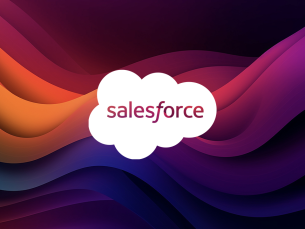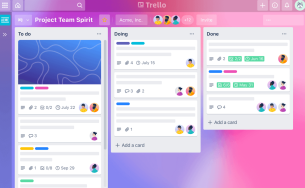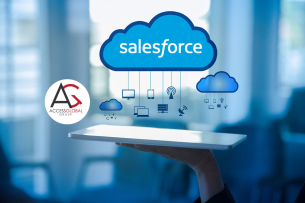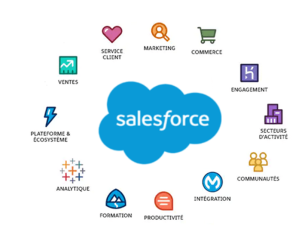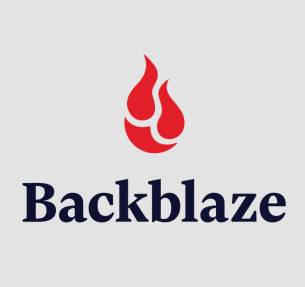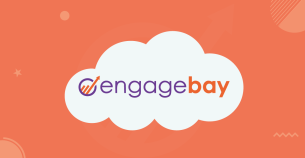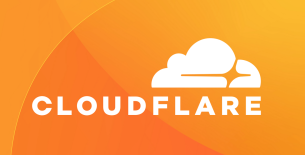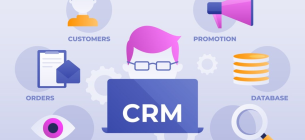In the ever-evolving landscape of technology, Oracle Database stands tall as a cornerstone for businesses around the globe. Renowned for its powerful capabilities, it serves as the backbone for data management in countless organizations. From startups to Fortune 500 companies, its efficiency and scalability make it an invaluable asset. Yet, beneath this technological marvel lies a complex pricing structure that can often leave even seasoned professionals scratching their heads.
Understanding Oracle’s pricing models is not just an exercise in financial diligence; it's essential for effective budget planning. A misstep here can lead to unexpected costs that strain resources or limit potential growth. With various licensing options and deployment choices available, navigating these waters requires insight and foresight. So, whether you're a business analyst strategizing for your next project or an IT manager weighing investment decisions, grasping how Oracle's database pricing works is key to making informed choices that align with your organization’s needs and goals. Ready to dive deeper? Let’s explore the intricacies of Oracle Database pricing models together!
Types of Oracle Database Licenses
When considering Oracle Database options, it's essential to understand the various licensing models available. Oracle offers three primary editions: Standard Edition, Enterprise Edition, and Cloud Services. The Standard Edition is tailored for smaller businesses or departments that require robust database capabilities without overwhelming complexity. In contrast, the Enterprise Edition caters to large-scale operations needing advanced features such as high availability and enhanced security. Meanwhile, Oracle Cloud Services present a flexible choice for organizations eager to harness cloud technology; this model allows users to pay only for what they consume, streamlining costs while enhancing scalability.
One pivotal factor in your decision-making process will be whether you prefer a perpetual license or a subscription-based model. A perpetual license typically involves a one-time fee granting indefinite use of the software, which might appeal to companies aiming for long-term stability with their databases. However, these licenses often require significant upfront investment and ongoing maintenance fees. On the other hand, subscription-based models reduce initial costs by allowing organizations to "rent" the software on an annual basis instead. This approach can make budgeting easier and provide access to the latest updates without additional expenditures.
Delving further into oracle's licensing intricacies, we encounter two prominent approaches: user-based and processor-based licensing. User-based licensing assigns access based on individual users (or named users), making it ideal for businesses with a limited number of employees requiring database interaction. Conversely, processor-based licensing counts the physical processors (CPUs) running Oracle Database software and is mainly suited for larger organizations where multiple employees will engage concurrently with the system—often leading to more cost-effectiveness when scaling operations. Navigating these options thoughtfully ensures you choose a model that aligns seamlessly with your organizational structure and budget constraints while reaping maximum benefits from your investment in Oracle technology.
In essence, selecting an appropriate type of Oracle Database license represents a critical aspect of managing IT budgets effectively. It’s vital not just to focus on immediate needs but also anticipate future growth trajectories within your enterprise; understanding how each license fits into those plans can help mitigate unforeseen expenses down the line. With clarity around these foundational choices, businesses can lay down solid framework decisions conducive to operational efficiency and technological advancement.
Factors Influencing Pricing
When evaluating Oracle Database pricing, it's crucial to consider the hardware requirements associated with your chosen deployment model. The performance of an Oracle Database installation is often dependent on the server's specifications, including its processing power, memory capacity, and storage speed. For instance, a business looking to deploy an Enterprise Edition might opt for high-performance servers that ensure quick data access and processing capabilities—this comes at a premium cost. Conversely, smaller organizations may find that the Standard Edition fits their needs without requiring over-the-top hardware investments. This creates a ripple effect; not only do you have to account for the license itself but also factor in these additional hardware expenses when budgeting.
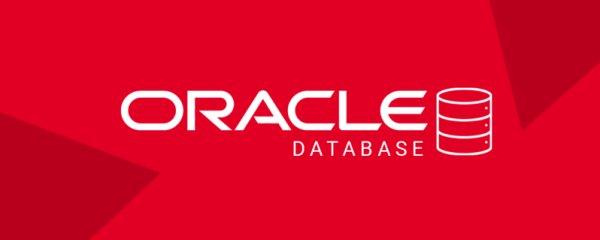
Support and maintenance fees further complicate budgeting considerations, as they can significantly augment total ownership costs. Organizations must choose the right support tier based on their operational needs; for example, comprehensive support plans often come with 24/7 access to technical assistance and fewer restrictions on service requests. While this level of assurance may be appealing to critical operations running 24 hours a day, it does lead to higher recurrent fees. Understanding how these support packages tie into overall pricing can aid in determining whether investing in more robust coverage is necessary or if basic support would suffice.
Data storage needs are another key contributor to Oracle Database pricing that cannot be overlooked, particularly as businesses scale up their operations. Companies with significant volumes of transactional data will need greater database size options or even multiple database instances as they grow. Storage-related expenses can vary substantially depending on what kind of infrastructure is employed—be it cloud solutions that offer flexible scaling or traditional physical storage methods that could incur additional real estate costs for servers and backup systems. It’s essential to assess projected growth trajectories carefully; a proactive approach to understanding future data storage needs may lead companies toward more cost-effective scaling strategies rather than scrambling for resources reactively during peak periods.
Cost Implications of Deployment Options
When considering Oracle Database pricing, the choice between on-premises and cloud deployment options can significantly impact overall costs. On-premises solutions require substantial upfront investments for hardware, software licenses, and IT personnel to manage the infrastructure. For instance, a financial services company might opt for an on-premises system to ensure tight control over sensitive customer data. However, this approach comes with not only initial capital expenditures but ongoing operational costs such as power consumption, physical space requirements, and maintenance fees that can add up quickly. In contrast, cloud deployment generally follows a subscription model that allows organizations to pay as they grow. Companies in high-growth sectors may find cloud solutions more appealing due to their scalability and flexibility without large initial investments.
Hybrid deployments are increasingly popular as they offer a balanced approach that combines both on-premises and cloud solutions. For example, consider a retail business that uses an on-premises Oracle Database for transaction processing during peak shopping seasons while leveraging cloud resources to handle off-peak databases for analytics and reporting. This kind of setup can lead to cost savings since it tightly manages resources according to demand while enabling quick adjustments without significant reinvestment in new physical hardware. The strategic flexibility offered by hybrid models allows companies to optimize their technology stack based on evolving market conditions, potentially saving money in the long run.
Geographical location is another vital factor influencing Oracle Database pricing due to various regulatory considerations impacting data storage and compliance requirements. Organizations operating in strict regulatory environments—such as healthcare or banking—may incur additional costs related to localized servers or compliance measures when deploying databases across different regions. Furthermore, hosting solutions in specific countries often come with varying pricing models driven by local taxes or labor charges. A multinational corporation may have leveraged Oracle’s capabilities differently across regions simply because of how licensing laws diverge from one country to another. Hence, understanding these geographical implications isn't just about where you store your data; it's also critical for aligning budgetary frameworks effectively with local norms and obligations.
Navigating these complex facets of deployment can be daunting; however, gathering insights into each option's cost implications helps businesses make informed decisions tailored specifically to their unique requirements and operational realities.
Discounts and Promotions
When it comes to Oracle Database pricing, understanding available discounts and promotions can significantly reduce costs for organizations. Educational institutions, non-profits, and research entities often qualify for special pricing arrangements that make these powerful database solutions more accessible. For example, Oracle frequently provides educational discounts which can include a substantial percentage off on licenses. Similarly, non-profit organizations may find financial relief through specific programs designed to support their missions without sacrificing essential technology needs.
Timing is also a crucial factor when considering Oracle's offerings. Tech companies looking to optimize their purchasing decisions should keep an eye on promotional periods, especially during fiscal year-end or significant product launches when discounts may be more abundant. Engaging with Oracle sales representatives during these times could yield insights into upcoming promotions that are not widely advertised. Additionally, being aware of seasonal sales can lead to strategic acquisition timelines that align with an organization’s budgeting cycles.
Moreover, Oracle has established various incentive programs aimed at encouraging businesses to transition from legacy systems to its modern cloud infrastructure. These migration incentives often come in the form of credits toward new licenses or complimentary support services for transitioning data and applications. For instance, a company moving its operations from an outdated system might find eligibility for discounted rates that further enhance their cost-effectiveness while adopting advanced technologies.
By understanding these discount structures and leveraging the right timing alongside migration incentives, decision-makers can navigate the complex landscape of Oracle Database pricing with greater confidence. Organizations not only stand to save financially but also gain competitive advantages by implementing robust database solutions without overextending their budgets. Ultimately, being informed about available options allows stakeholders to make strategic choices aligned with both immediate needs and long-term goals.
Evaluating Total Cost of Ownership (TCO)
When considering Oracle Database pricing, evaluating the Total Cost of Ownership (TCO) is crucial for making an informed decision. TCO takes into account not only the upfront costs associated with acquiring licenses and hardware but also ongoing operational expenses that accumulate over time. For example, when a company opts for a perpetual license, the initial cost may be significant, but it often comes with fewer long-term subscription fees compared to cloud-based solutions. Conversely, choosing a subscription model might ease initial financial burdens but lead to higher cumulative expenses as usage scales up.
The impact of different licensing strategies and deployment options on long-term finances cannot be overstated. For instance, enterprises that select the Enterprise Edition of Oracle Database might benefit from advanced features that support their growing data needs, ultimately leading to increased efficiency and productivity. However, if those features are utilized without careful planning around projected expansions or potential shifts in business strategy, companies may incur unexpected costs related to scaling up resources or adjusting licenses mid-cycle. An illustrative case could involve a tech startup initially opting for the Standard Edition due to budget constraints; as they grow rapidly, they may find themselves needing additional capabilities afforded by the Enterprise Edition sooner than expected.
To accurately calculate TCO in a way tailored to your organization's unique context, consider utilizing financial analysis tools designed specifically for IT infrastructure assessment. These tools can help identify fixed and variable costs associated with Oracle deployments including software maintenance fees, support contracts, necessary hardware upgrades, and even training expenses for staff. Moreover, leveraging spreadsheets with detailed listings of all relevant factors—from server maintenance to backup solutions—enables organizations to visualize their comprehensive spending landscape more clearly. By conducting this thorough evaluation before finalizing any commitments on Oracle Database licensing or deployment strategy, businesses can optimize their investments and avoid unwelcome surprises down the road.
Ultimately, being proactive about assessing TCO empowers organizations not just to understand immediate expenses but also equips them with insights into long-term sustainability within their tech budgets. As businesses evolve and technology landscapes shift rapidly in today’s market environment, having a clear picture of total ownership costs becomes imperative—not only for guiding purchasing decisions but for strategic planning moving forward as well.
Best Practices for Budgeting Oracle Database Costs
Budgeting for Oracle Database costs can be a complex task, especially given the myriad of options available and the fluctuating usage patterns that many organizations experience. One effective approach to forecasting expenses is to analyze historical usage data and growth projections carefully. For instance, if your organization has seen a steady annual increase in database transaction volumes, it’s critical to translate this trend into financial terms. By employing tools like predictive analytics or budget management software, you can create models that estimate future licensing needs and operational costs based on anticipated workloads.

Negotiating contracts with Oracle sales representatives can significantly influence your overall expenditure. It’s advisable to initiate discussions well before your current licensing agreements expire. Researching industry benchmarks on pricing and having a clear understanding of your organization's specific needs will put you in a stronger position during negotiations. For example, if you discover that a competitor received a discount due to bulk purchases or committed timelines, use this information strategically to advocate for similar benefits in your arrangements with Oracle.
Once deployed, monitoring ongoing costs becomes crucial for optimizing spending on Oracle databases. Implement dashboards tracking usage metrics—such as data storage consumption and peak processing times—to gain real-time insights into where money is being spent ineffectively. This proactive approach encourages regular conversations within IT teams to assess whether resource allocation aligns with business goals or if adjustments are necessary. Additionally, scheduling periodic reviews of contracts and licensing models ensures that your organization remains agile; adapting to any shifts in operational needs can help prevent financial leaks over time.
By keeping these best practices at the forefront of budgeting strategies, businesses can not only make informed purchasing decisions but also maintain fiscal health while maximizing their investment in Oracle Database technologies.
Customer Case Studies
Exploring real-world implementations of Oracle Database can provide invaluable insights into how companies navigate the intricacies of pricing strategies. For instance, a global retail company recently transitioned to Oracle’s cloud services while employing a pay-as-you-go pricing model. This flexibility allowed them to scale their database usage in response to seasonal demands, significantly reducing unnecessary expenses during quieter months. By adopting this approach, they managed to cut costs by nearly 20% compared to their previous fixed-fee licensing structure, highlighting the value of tailoring strategies to meet fluctuating business needs.
Another compelling example comes from a healthcare organization that opted for an on-premises Enterprise Edition license due to stringent regulatory requirements. While this choice initially seemed cost-effective, it also introduced higher up-front capital expenditures and ongoing maintenance fees than anticipated. The long-term implications became clear during audits when the actual data storage requirements exceeded initial projections, leading to significant unexpected upgrades and enhancements in hardware. This case emphasizes the importance of thorough planning and realistic assessments of data needs before committing to a specific pricing model.
In contrast, a tech startup chose Oracle Database's Standard Edition with a subscription-based license as part of its growth strategy. As they expanded rapidly, they benefited from lower upfront costs and predictable monthly expenses aligned with their performance metrics and user growth. This decision facilitated agile scaling without daunting financial commitments upfront. Their experience illustrates that for smaller enterprises or those experiencing rapid change, opting for subscription models could offer both financial relief and organizational flexibility.
These diverse case studies reveal crucial lessons across industries regarding pricing strategies with Oracle Database. They serve as reminders that while there is no one-size-fits-all solution, organizations must consider their unique operational landscapes, anticipated growth trajectories, and budgetary constraints when selecting licensing options. Ultimately, learning from these real-world applications prompts businesses to evaluate not just the immediate costs but also longer-term gains or pitfalls in implementing Oracle technologies effectively.
Future Trends in Oracle Pricing
As technology continues to evolve, so too does Oracle Database pricing. One of the most significant trends shaping pricing strategies is the rise of pay-as-you-go models in cloud services. Companies are increasingly shifting towards consumption-based billing, allowing them to only pay for the resources they use rather than committing to a fixed license. This flexibility not only helps organizations manage their costs more effectively but also aligns expenses with real-time business needs, making it a smart financial choice for many companies looking to scale operations quickly and efficiently. For example, an e-commerce platform can dynamically adjust its database capacity during peak seasons without incurring excess charges during slower periods.
Another trend worth noting is the impact of emerging technologies, such as artificial intelligence and machine learning, on database management cost structures. As these technologies become integral to data processing and analytics tasks, they require advanced database features that could come with additional costs. However, the efficiencies gained through automation and predictive analytics could outweigh these costs by reducing human resource expenses or optimizing operational processes. Organizations must be prepared for this balancing act—investing in new tech while being mindful of how these innovations will reshape their budgets.
The competitive landscape also plays a crucial role in influencing Oracle's pricing strategies over time. With numerous players entering the cloud infrastructure market—including AWS, Microsoft Azure, and Google Cloud—Oracle must remain vigilant about its offerings and price points. Companies are now more informed than ever about alternative solutions, leading to increased pressure on legacy providers like Oracle to demonstrate clear value in their pricing structures. As firms assess their options for deploying databases across multiple platforms and vendors, competition can drive innovation as well as smarter pricing practices aimed at leveraging client loyalty.
In summary, understanding the future trends in Oracle Database pricing requires a keen awareness of shifts toward flexible consumption models, technological advancements affecting feature sets, and market pressures stemming from competitive rivalry. Organizations that stay ahead of these trends will be better positioned not only to optimize their current expenses but also strategically plan for future growth within an evolving tech landscape.
Making Informed Decisions on Oracle Database Pricing
In conclusion, understanding Oracle Database pricing requires navigating various licensing options, deployment strategies, and available discounts. Business analysts, IT managers, and decision-makers should consider factors such as hardware requirements and total cost of ownership when assessing their organization's needs. The interplay between perpetual licenses and subscription models can significantly influence budgeting decisions.
Ultimately, the goal is to make informed choices that align with your organization’s objectives and financial constraints. By leveraging best practices in budgeting and keeping an eye on future trends, you can streamline costs while ensuring robust database management. Embrace curiosity and research thoroughly; the right decision will support both immediate operational needs and long-term growth.

